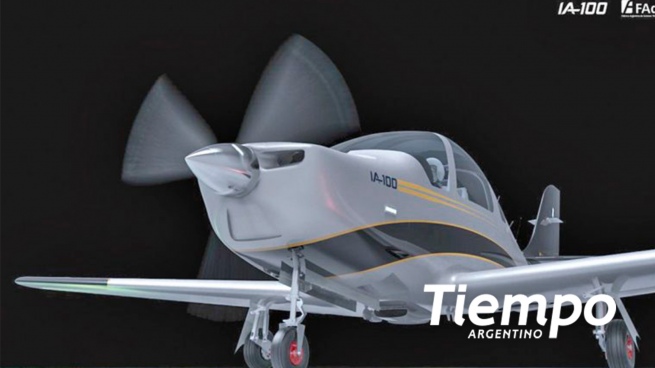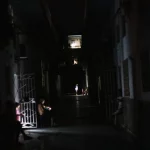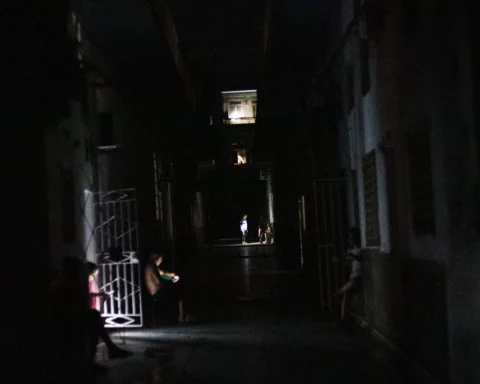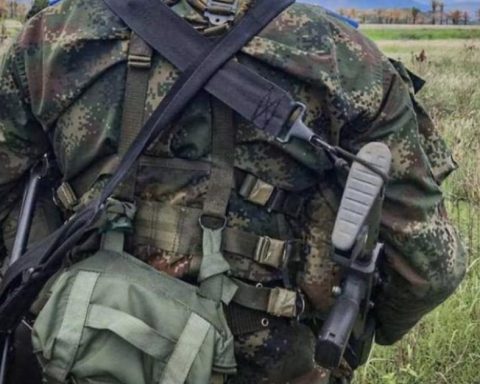After almost 30 years, Argentina will produce a new aircraft of its own for Air Force training. The IA-100B Malvina was presented in April within the framework of the International Air and Space Fair (FIDAE), in Santiago de Chile. In addition to the contribution to productive development and the cost savings (and dollars) that producing an aircraft in our country means, the project highlights its creator: the Brigadier San Martín Aircraft Factory (FAdeA), which after years of emptying in the ’90s it re-emerged with aircraft for military pilots, and with alliances with large international companies such as Embraer and Eithad Airways for the manufacture of auto parts. Next, a Made in Argentina story.
Of the business units that are most important for the company headquartered in the province of Córdoba, two are the most important: Maintenance and Modernization. “We maintain Air Force planes, but we also have commercial maintenance, which is essential for this business unit to be sustainable and not have idle capacity,” Mirta Iriondo, president of the firm, remarks to Tiempo, adding: “FAdeA Throughout its history, it has always had good aircraft development projects, for small-series production. Planes like the Pucará, which is still in force today, or the last one that was the Pampa. And now also the IA 100 Malvina that next year the production line will be full”.
Regarding the Maintenance dedicated to the Air Force, they are currently focused on the Hercules C-130 aircraft and on putting the Pampa’s engines back on line. In Modernization they have the Argentine Air Force as their main recipient, but they have enough accumulated capacity to offer services abroad: “For example, we have modernized a Fokker 50 for the Peruvian Navy,” reveals Iriondo.

Reliability and low cost
As stated in its presentation, the IA-100B Malvina is a primary trainer aircraft, designed for military use, unlike the Pampa, which was intended for advanced training. «The IA 100 has a more economical, commercial piston engine, with also commercial bionics, which is used for the first training of future Air Force pilots. While the Pampa is a single-engine, turbocharged, advanced training aircraft. After the Pampa, the pilots are already jumping into what would be a fighter plane,” Iriondo said.
Two of the strongest points of the IA-100B Malvina are its reliability and low cost, which make it one of the most competitive options in the world market. “We are seeing which are the armed forces that in the coming years are going to have the need to change their primary training aircraft. The IA-100B Malvina is low-cost, it costs around a million dollars”, highlights Iriondo.
In this sense, he compared it with the Grob training aircraft, of German origin. In 2014, the Argentine Air Force acquired 10 Grob 120 TP primary training aircraft, with an initial contract of 19.5 million euros: about two million euros each unit. The differences in cost, compared to the new Argentine aircraft, are visible, in a context where it will be essential to import only what is essential and maximize exports. Also, the difference with the Pampa is great, since the latter costs about 15 million dollars.
According to the company, 60% of the plane will be made up of elements of national origin. There are some that may require equipment of foreign origin, but the avionics will be integrated by the Tandil company Redimec. «The most interesting thing about the IA 100 is that the integration is totally national. And we are developing a significant number of national suppliers. We have transferred all the engineering to them in order to start production. We calculate that by the end of the year the plane will have its roll out, which is to take it out of the workshop to start the ignition and the first flights”, Iriondo anticipates. This search for the generation of national suppliers also includes the IA-63 Pampa, the last great national development, built in 1984 and renovated in recent years.
The Investment and Foreign Trade Bank (BICE) pre-finances the Malvina project, with the aim of encouraging its acquisition in different countries. “It is the first time that this has happened in the country –Iriondo enthuses–. We are leaving to be able to sell it with a credit from BICE to whoever buys it ». For now, they have already signed a contract with the Argentine Ministry of Defense with a view to, between the end of this year and 2023, producing the first units for the Argentine Air Force.

Associations and concessions
The history of FAdeA, which will be 95 years old next month, is a reflection of the ups and downs of the country. And the lack of a state policy that transcends the governments of the day. In December 1994, at the height of the Menem regime, the Ministry of Defense and the US aerospace firm Lockheed signed a concession agreement for what was then called the Córdoba Material Area (AMC), for 25 years. It was only in December 2009 that the company became state-owned again, after disbursing 110 million dollars.
“Lockeed Martin had other policies. He centrally focused on the maintenance of Air Force planes, and a reduction in personnel. In 2004 he was asked to build new structures for the Pampa. So Lockeed put the production line back on, but having already agreed that the factory would be recovered again for the national State”, recalls the current head of FAdeA.
There, the manufacture of the Pampa III, which was going to have a new engine, began to gain momentum again. Then came another interruption, this time from the hand of macrismo. It flew in 2015 and later the Pampa III supply contract was terminated by the State in 2016. It only slowly began to resume two years later, because the entire structure was assembled, and the engines had even been purchased in 2015.
Currently, some 1,100 people work at FAdeA, in different projects such as the modernization of the Pampa, the reengineering of the Pucará Fénix, the maintenance of commercial aircraft, and in the future the intention of adding the manufacture of auto parts for the entire region. Iriondo emphasizes the need to continue the policies: «that throughout the different governments this company, as a State strategy, is protected. Because until now, what has always happened is that it gains momentum, the government changes and certain business units are closed. With advances, setbacks, and sometimes punishments as well, as happened to us in 2016. And to that add more prominence in the commercialization of civil aviation, which allows us to sustain it in difficult times, as INVAP has done”. «

A key axis: commercial aviation
FAdeA’s developments are not based only on the military aviation industry. Since 2017 they have been associated with the Brazilian aeronautics company Embraer. In fact, it is a relationship with history. In the second half of the 1980s, together they had developed the Embraer/FMA CBA 123 Vector turboprop designed for commercial regional services, an innovative, high-tech aircraft that, after making its first successful flight in 1990, ended up being canceled in the mid-1990s. of the ’90s for economic and, fundamentally, political reasons. “Embraer is an association – highlights Mirta Iriondo, president of FAdeA -. We are minor partners for the production of the KC 390 transport aircraft. This has allowed us to greatly improve our quality systems and be in a better position to go out and look for other companies with which we could produce aircraft parts.”
FAdeA also worked with Aerolineas Argentinas on the Boeing 737 NG, an aircraft with retro design and colors presented in 2020 on the occasion of the 70th anniversary of the flag line. In addition, the aeronautical manufacturing company carries out projects with other airlines. This is the case of the LATAM Airbus 321 (photo), whose structure was molded, designed and painted in the Cordoba workshops.

The remote control of the Pucará Fénix
Thanks to the Pucará airplane and the Pulqui I and II of the first Peronism, Argentina became the sixth country with the highest production of airplanes in the world. The following governments were discarding that idea.
Today FAdeA has among its production lines the remote control of the Pucará Fénix, for use in logistics, surveillance and intelligence of the Air Force.
The Pucará modernization and repowering project had its starting point with the signing of Contract 10 at the beginning of 2010. And it continued in these years, mainly oriented to aerospace control of the northern border. The leading role is played by the IA-58 Pucará Fénix model, presented almost three years ago.

First defamation, then dismantling
In 2016, at the beginning of the macrismo in the nation, FAdeA suffered something similar to other icons of national development. First, they attacked her in press releases accusing her of corruption. Profile titled: “Fadea K: they warn of diversion of funds for 0 million and Justice awaits data from AFIP to charge former officials.” Infobae: »FAdeA, the factory without clients but with a millionaire deficit that La Cámpora directed». Immediately afterwards, the national Executive stopped production. For example, the Pampa III, which already had an armed structure and even a purchased engine.
One of the criticisms was a helicopter that was going to be manufactured with the Chinese state defense company CATIC. “There was no association. CATIC sold a helicopter that (finally) was not well received by the Chinese Army. Today it is in better condition, but not at that time,” says Mirta Iriondo, head of FAdeA. «A prototype was bought, it was put together. ANAC had to certify, and the certification was never completed. It was also unclear what force was going to use it. It was bought to see if some business could be done with CATIC, which did not come to fruition».



















